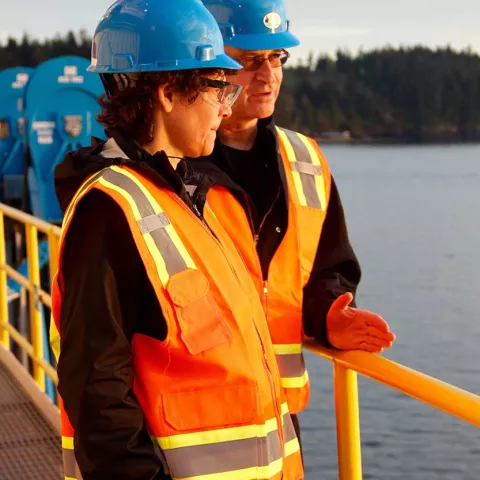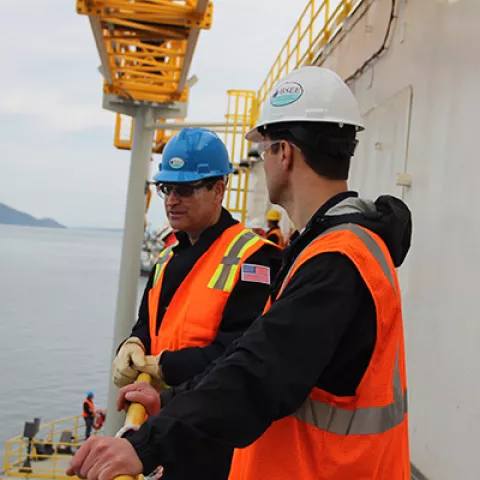Last month Bureau of Safety and Environmental Enforcement (BSEE) Director Brian Salerno spent two days with Department of the Interior Assistant Secretary Janice Schneider onboard the Arctic Challenger, watching Shell and contractors Superior Energy Services Inc. and Foss Marine go through trials with a specially designed containment dome. Director Salerno and Assistant Secretary Schneider were onboard at the invitation of Shell to observe the demonstration, which is part of Shell's preparation to carry out its proposed exploration drilling activities in the Arctic in 2015. Following a Record of Decision affirming Chukchi Sea OCS Oil and Gas Lease Sale 193 and the remaining oil and gas leases issued in 2008 as a result of the sale, Shell’s exploration plan is currently with the Bureau of Ocean Energy Management (BOEM). Should BOEM approve the exploration plan, BSEE requires that Shell apply for a permit to drill for each well the operator proposes to drill. Those permits would be thoroughly reviewed to ensure that the operations meet the standards for safety and environmental protection before BSEE approves any drilling activity.
'Though Shell successfully showed that they can deploy the containment dome, we will remain engaged during future inspections, reviews, tests, and drills of Shell’s safety equipment and their capabilities to deploy them in an emergency situation,' said BSEE Director Brian Salerno. 'This work is to ensure that, should drilling occur, Shell can conduct source containment operations safely and in a manner appropriately protective of the environment.'
The containment dome is one piece of a larger Arctic Containment System developed by Shell that also includes a capping stack and production processing system on board the Arctic Challenger. The Arctic Challenger is a ship-shaped barge that also houses the containment dome and the offshore support vessels that are necessary in order for the containment system to be deployed effectively. The 20-foot-tall steel containment dome would be used in the event that a capping stack could not completely staunch an uncontrolled subsea flow event. Rather than attaching to the top of the blowout preventer as the capping stack did at the Macondo well in the Gulf of Mexico, the containment dome is lowered to the seafloor over the well site by the use of buoyancy tanks. The hydrocarbons flowing from the well head are collected at the top of the dome and pumped back to the Arctic Challenger for processing.
Shell’s Arctic Containment System fulfills a condition of a drilling permit requiring that an operator demonstrate the capacity to contain a subsea well. The capabilities of the capping stack and containment dome must meet the requirements that are specific to the characteristics of the proposed well.
'To ensure safe energy exploration of any potential future operations in the Arctic, BSEE is relying on all of its regulatory tools,' said Salerno. 'We are maintaining a constant presence to foster a culture of safety and preparedness in all offshore activities.'
In addition to the drilling permit, all operators are required to have an Oil Spill Response Plan reviewed and approved by BSEE. The OSRP accounts for the remoteness of the drill site and Arctic environment in the event of an oil spill during drilling operations. Using its authority, BSEE also conducts a variety of equipment inspections and deployment exercises, some of which may be unannounced, to validate the tactics, logistics, resource availability, and personnel proficiency identified and relied on in the approved oil spill response plan.


